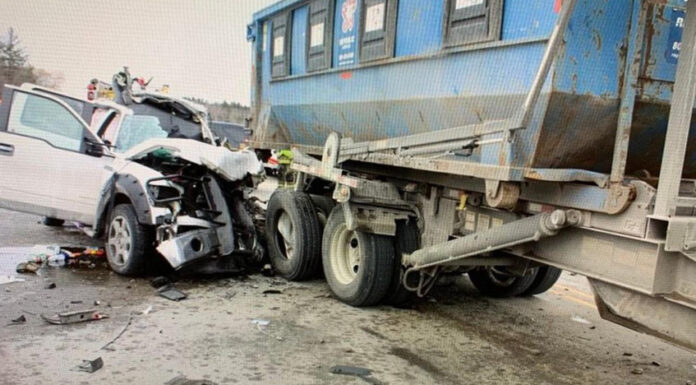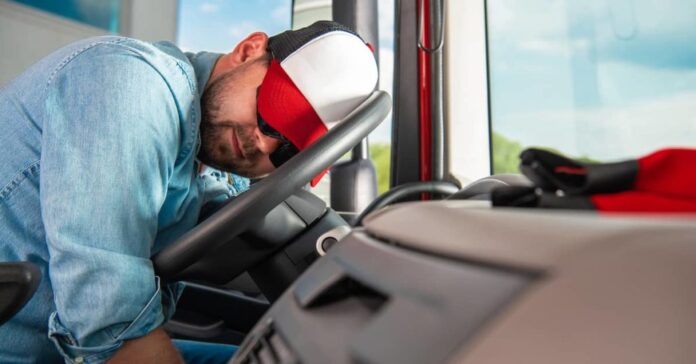Navigating the world of motor vehicle collisions can be complex, especially when distinguishing between truck and car accidents. These events, while sharing some surface similarities, can be fundamentally different when analyzed in detail.
This article aims to demystify the intricacies inherent to both types of accidents. Comprehending these distinctions is vital, not only for drivers but also for law enforcement, legal professionals, insurance agencies, and accident investigators. Whatever the case, those involved must find a lawyer if they are to go through it optimally and with as little trouble as possible.
1. Impact and Force

The sheer magnitude of an average truck can’t be ignored when contemplating the force and impact during a collision. Commercial trucks often weigh 20 to 30 times more than passenger vehicles. Consequently, the exerted force in truck-involved accidents tends to be dramatically greater than in car collisions. This enhanced force not only wreaks havoc on the involved vehicles but also amplifies the potential for catastrophic property damage and serious injuries.
While car collisions can undeniably be damaging, the majority don’t compare to truck accidents in terms of raw impact and force. One of the main reasons is that cars have a significantly lower center of gravity than trucks. This factor, along with lighter weight, reduces the overall force of impact during a collision. Yet, it’s worth noting that high-speed car accidents can produce significant force, leading to severe outcomes.
2. Injury Severity
The heightened force of truck collisions often correlates to more severe injuries. Passengers in smaller vehicles usually bear the brunt of these impacts, resulting in a higher likelihood of severe, sometimes fatal, injuries. Such catastrophic outcomes might include traumatic brain injuries, spinal cord damage, and multiple fractures.
Injuries resulting from car accidents tend to be less severe, generally. However, this isn’t to downplay their seriousness. Car accidents can indeed lead to fatal injuries, especially at high speeds or in situations where seatbelts aren’t used. The less dramatic force involved in these collisions, though, typically results in a wider range of injuries, from minor whiplash and bruises to more serious conditions such as broken bones or concussions.
3. Roadway Safety Concerns
One significant concern related to truck accidents is the inherent hazard they pose to other roadway users. Trucks, due to their massive size and extended stopping distance, can block multiple lanes during an accident, creating precarious situations for other drivers. Additionally, trucks often carry hazardous materials, the spillage of which can lead to further dangers on the road.
Contrarily, cars often pose less of a road safety risk. Although a multi-car pileup can certainly disrupt traffic and cause secondary accidents, individual ones are typically easier to manage. Cars don’t generally carry hazardous materials, and their smaller size makes it easier to clear them from the roadway, mitigating risks to other drivers.
4. Driver Fatigue and Regulations

Fatigue can be a significant factor in any vehicular accident, but it holds particular prominence in truck-related incidents. Truck drivers frequently endure long hauls, often against the clock, leading to dangerous levels of fatigue. Stringent regulations such as Hours of Service (HOS) rules exist to combat this issue, but compliance isn’t always guaranteed, and fatigue-related accidents still occur.
Car drivers aren’t subjected to the same stringent regulations, as their trips tend to be shorter and less physically demanding. However, driver fatigue remains a factor in car accidents, especially in situations involving long drives or monotonous road conditions. It’s crucial to note that regardless of the vehicle type, responsible driving demands adequate rest and alertness at all times.
5. Stopping Distances
Trucks, given their substantial weight, require longer distances to come to a halt, especially when moving at high speeds. This trait exacerbates the potential for rear-end collisions and multi-vehicle accidents. Drivers need to be aware of this limitation and maintain a safe following distance when behind a truck.
Cars are nimble and have significantly shorter stopping distances. However, this does not eliminate the possibility of accidents. Factors such as road conditions, vehicle conditions, and driver attentiveness can still contribute to a collision. The key takeaway is that regardless of the vehicle, maintaining an appropriate stopping distance based on vehicle type, speed, and conditions is crucial.
6. Potential for Multiple Parties Involved
With trucks, there can often be several parties involved, complicating liability issues. These parties could include the truck driver, trucking company, maintenance providers, cargo loaders, and truck manufacturers. Each entity has different levels of responsibility and liability in the event of an accident.
Car accidents usually involve fewer parties. Typically, the drivers are the primary individuals considered for liability. Occasionally, other parties like vehicle manufacturers or maintenance providers could be implicated, especially if a mechanical failure is deemed to have contributed to the accident.
7. Insurance Coverage and Liability

In the realm of insurance and liability, truck accidents again present a more complicated picture. The trucking industry carries substantial insurance policies due to the high risks associated with large vehicle operations. Furthermore, determining liability can become complex due to the involvement of multiple parties.
Car accidents are usually more straightforward regarding insurance and liability. Standard auto insurance policies typically cover these incidents, with liability often allocated to one or more of the drivers involved. That said, unique scenarios can emerge, like in cases of mechanical failure or other unexpected factors that might shift liability away from the driver.
8. Investigation and Evidence Collection
The collection of evidence and the overall investigation process is another area where truck and car accidents differ. With trucks, investigators need to scrutinize the truck’s Electronic Logging Device (ELD) records, driver’s credentials, truck maintenance records, and cargo loading information. This in-depth investigation is necessary due to the higher stakes and multiple parties involved.
For car accidents, the process is usually more straightforward but no less important. Investigators typically look at driver statements, police reports, vehicle damage, and any available video footage. While these investigations may appear simpler, their role in determining liability and understanding the cause of the accident remains vital.
9. Legal Considerations and Litigation Challenges
The legal landscape of truck accidents tends to be intricate due to the severe injuries often involved and the potential for multiple liable parties. These cases often involve substantial compensation claims, making the litigation process quite challenging. Lawyers handling such cases must be well-versed in trucking industry regulations and be ready to handle a complex litigation process.
Legal proceedings are usually less complex, mainly because the injuries and damages involved tend to be less severe. However, this doesn’t mean these cases are straightforward. Every accident is unique, and legal professionals must be prepared to handle each case individually, considering all relevant factors.
Summary

While truck and car accidents share the common thread of unfortunate vehicular mishaps, they are far from identical. Differences in impact force, injury severity, safety concerns, driver regulations, stopping distances, involved parties, insurance coverage, investigation processes, and legal considerations underscore the unique aspects of each incident type. As road users, understanding these distinctions can help us appreciate the complexity of our transportation system and, hopefully, promote safer driving habits for all.









